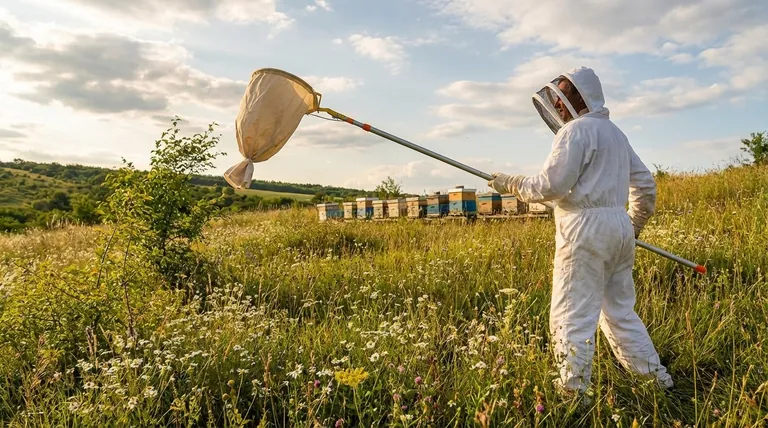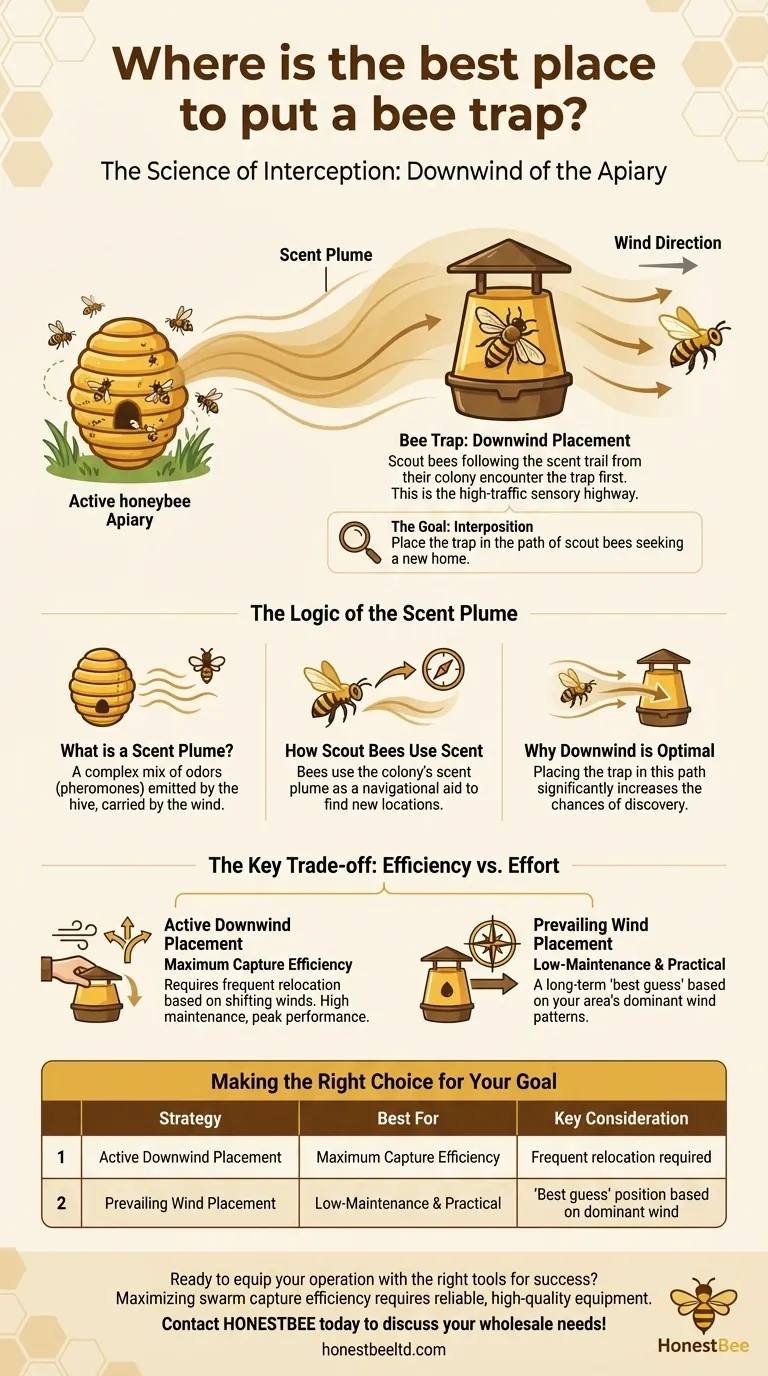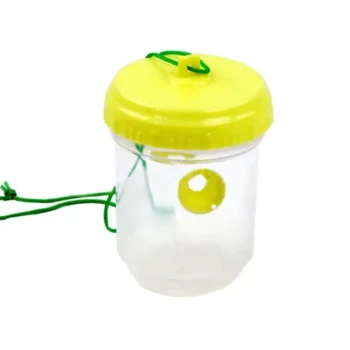To be most effective, a bee trap should be placed downwind of the apiary. This strategic placement ensures that scout bees from the hive will encounter the trap first as they follow the natural scent trail, or "plume," that drifts away from their colony on the wind.
The core principle is not about a specific location, but about interception. Your goal is to position the trap directly in the path of scout bees that are actively searching for a new home by following the scent of an existing colony.

The Logic of the Scent Plume
To effectively trap a swarm, you must think like a scout bee. These bees are tasked with finding a suitable new location for a portion of the colony, and they rely heavily on scent to navigate and orient themselves.
What is a Scent Plume?
A honeybee hive constantly emits a complex mixture of odors, including pheromones from the queen and the colony itself.
This collection of scents is carried by the wind, creating an invisible trail known as a scent plume.
How Scout Bees Use Scent
Scout bees fly out from their hive to investigate potential new homes.
They often use the scent plume from their own hive as a navigational aid, following it back and forth as they explore the surrounding area.
Why "Downwind" is the Optimal Position
Placing your trap downwind of the apiary puts it directly in this high-traffic sensory highway.
As scout bees follow the familiar scent of a colony, they are much more likely to discover your trap, investigate it, and determine it's a suitable new home.
Understanding the Key Trade-off
While the "downwind" principle is simple, its practical application requires a clear understanding of its primary limitation.
The Challenge of Shifting Winds
Wind direction is not static; it can change throughout the day and from one day to the next.
For the trap to remain in the most optimal position, it must be relocated whenever the wind changes significantly.
The Commitment to Efficiency
This means that the most effective trapping strategy is also the most labor-intensive.
Maximizing your chances of capturing a swarm requires active monitoring of weather conditions and a willingness to move the trap accordingly. This is the trade-off for peak performance.
Making the Right Choice for Your Goal
Your trapping strategy should align with your level of commitment and resources.
- If your primary focus is maximum capture efficiency: Be prepared to monitor wind direction and relocate the trap to keep it directly downwind of the target apiary.
- If your primary focus is a practical, low-maintenance approach: Identify the prevailing wind direction for your area and place the trap there as a long-term "best guess" position.
By understanding how bees navigate by scent, you can dramatically increase your success in capturing a swarm.
Summary Table:
| Strategy | Best For | Key Consideration |
|---|---|---|
| Active Downwind Placement | Maximum Capture Efficiency | Requires frequent relocation based on changing wind direction. |
| Prevailing Wind Placement | Low-Maintenance & Practical | A 'best guess' position based on your area's dominant wind patterns. |
Ready to equip your operation with the right tools for success?
Maximizing swarm capture efficiency requires reliable, high-quality equipment. HONESTBEE supplies durable beekeeping supplies and equipment to commercial apiaries and beekeeping equipment distributors through wholesale-focused operations. Let us help you build a more productive and profitable season.
Contact HONESTBEE today to discuss your wholesale needs!
Visual Guide

Related Products
- HONESTBEE Professional Telescopic Pole Bee Swarm Catcher
- HONESTBEE Professional Long Handled Hive Tool with Precision Cutting Blade
- HONESTBEE Advanced Ergonomic Stainless Steel Hive Tool for Beekeeping
- Professional Dual-End Stainless Steel Hive Tool for Beekeeping
- Reusable Clear Small Hive Beetle Traps for Beehives Beetle Trapping Tools
People Also Ask
- Do honey bees leave their hives? Understanding the Critical Role of Swarming
- How do commercial beekeepers prevent swarming? Master Proactive Hive Management
- How frequently should pollen be harvested from traps? Optimize Quality and Hive Health
- How should a captured swarm be placed into the hive equipment? A Guide to Secure Hiving
- How can walk-away splits help in swarm prevention? A Proactive Strategy for Beekeepers



















